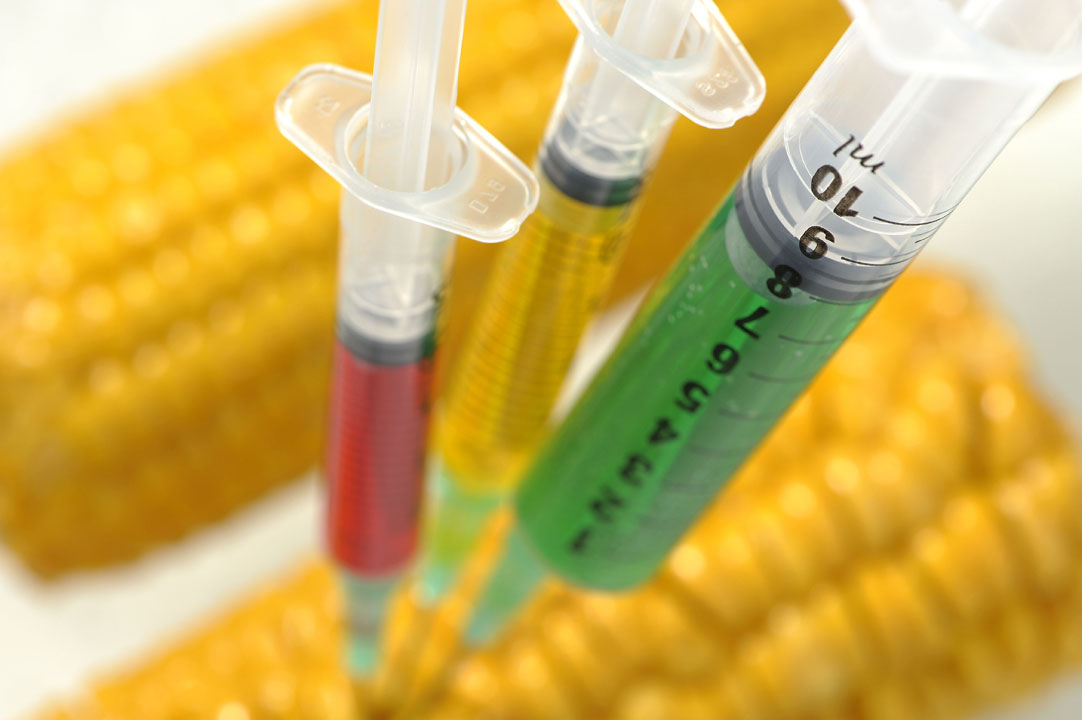If you don’t think you’re eating genetically modified foods, think again.

According to the International Service for the Acquisition of Agri-Biotech Applications, in 2012 a record 170.3 million hectares of biotech crops were grown around the world, at an annual growth of 6%. In Canada, 97.5% of canola is genetically modified — that’s 8.4 million hectares, which is larger than New Brunswick.
How are genetically modified foods made?
The first commercialized genetically modified food was the “Flavr Savr” tomato in 1994. Though it is no longer produced, the industry has exploded since then with GMOs (genetically modified organisms) in corn, soy, and canola.
Making GMOs sounds easy: scientists merely search out the best trait of a particular organism and then extract that particular part of the DNA from it. That trait may then be modified slightly and put into a recipient organism. Over time, more breeding is done to strengthen it, making it more durable. This is called recombinant DNA, or rDNA.
But Luc Bourbonniere, Section Head of the Novel Food Sections and Food Director at Health Canada, said that genetic modification is nothing new to science: early farmers crossbred various animals in order to get the desired traits for their livestock.
Stephen Yarrow, Vice President of Plant Biotechnology at CropLife Canada, which represents developers, manufacturers and distributors of pesticides and bio-chemistry products, agreed.
“If we think about today’s corn varieties, or canola varieties or soy bean varieties over the last 100 years, these don’t bear much resemblance to the wild plants that were grown 10,000 years ago. Through selection and improvement, these things are very much products of human intervention.”
Yarrow said that there are around over 50 genetically-modified foods that have been approved for use in Canada. However, he said, “That doesn’t mean they’re all commercialized.”
Genetically-modified corn, canola and soy are most common in Canada, whereas other countries around the world grow genetically-modified cotton and rice.
Though it sounds harmless enough, because GMOs using rDNA technology have only been produced over the past 20 years, some claim that not enough research on the effects has been conducted. As well, farmers fear that there is the risk of GMO seeds blowing into non-GMO crop areas, thereby eliminating the natural crops that have been planted.
Why have genetically modified foods at all?
The genetic engineering of foods was designed to increase crop production, specifically, healthy, durable crops.
“The way I like to think of it is, if one is in the business of farming…it’s a war, it’s a battle. The grower is constantly fighting against diseases, insects, pests and weeds, and…climatic events. As a result of that, there’s going to be losses,” said Yarrow. “That’s partly why, if you think back tens of thousands of years, why humans have selected plants that manage to survive this constant barrage of challenges more effectively.”
“So in the last 20 years of using genetically-modified traits, we’ve managed to get ahead a little bit further in that battle against weeds and diseases.”
Bourbonniere said that any new foods introduced within Canada are safe, including any GMOs.
“All GM food… must be first of all assessed by Health Canada to ensure they are safe for human consumption,” he said.
Watch: GMO protests in Kelowna
Still, no matter what the arguments are for GMOs, there’s been a public outcry against the unnatural breeding practices. Concern over where the DNA originates from — ie. bacteria or viruses — worries some groups.
Yarrow said that, although some of the traits found in GMOs do indeed come from bacteria, they are bacteria that are ubiquitous in nature.
But in Canada, it’s difficult to avoid GMOs: Health Canada has no guidelines for companies to report which foods are genetically modified. There is only a standard for voluntarily reporting. There has been recent public outrcy to label GMO foods. But this might not be possible.
“If you’re an organic farmer, your practice is to not use genetically modified crops,” Yarrow said. “But the organic community has a certain tolerance to pesticide drift. There’s no such thing as 100 per cent pure.


Comments